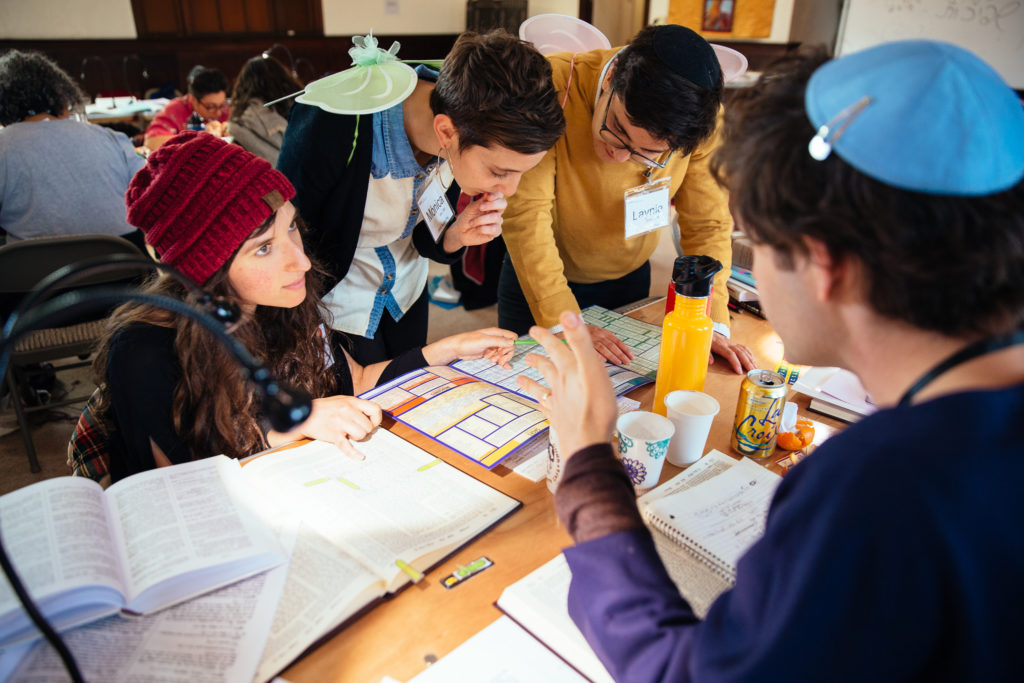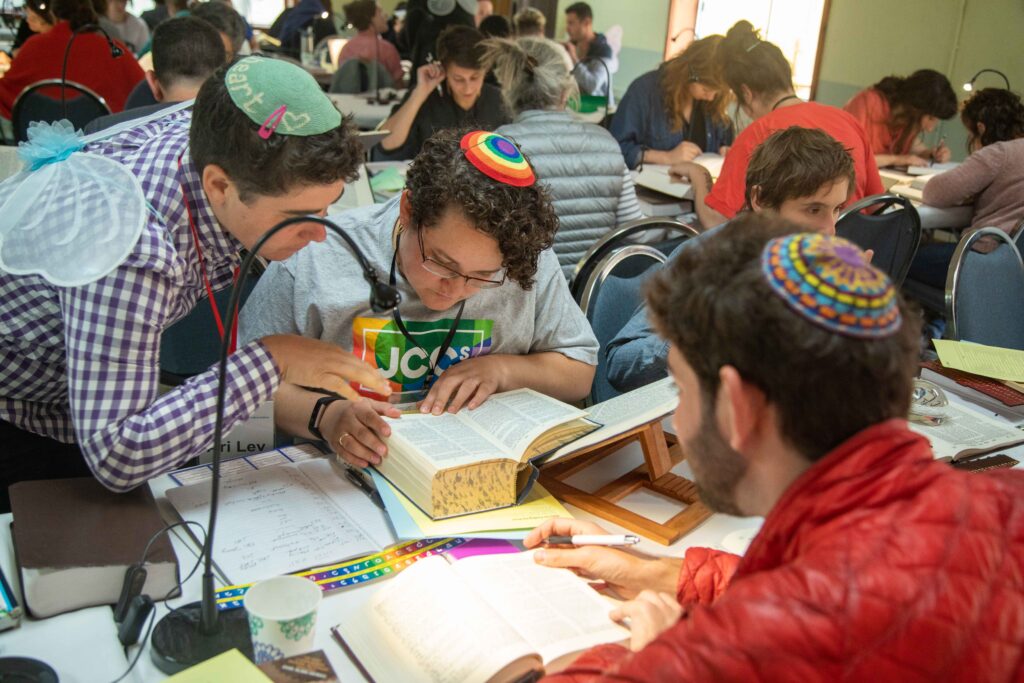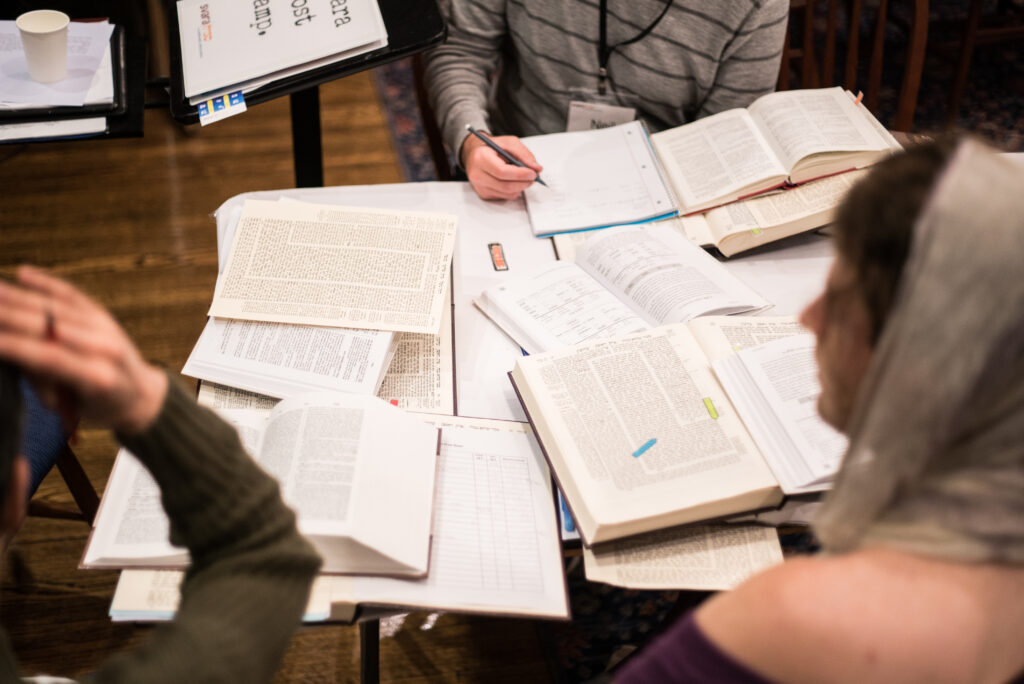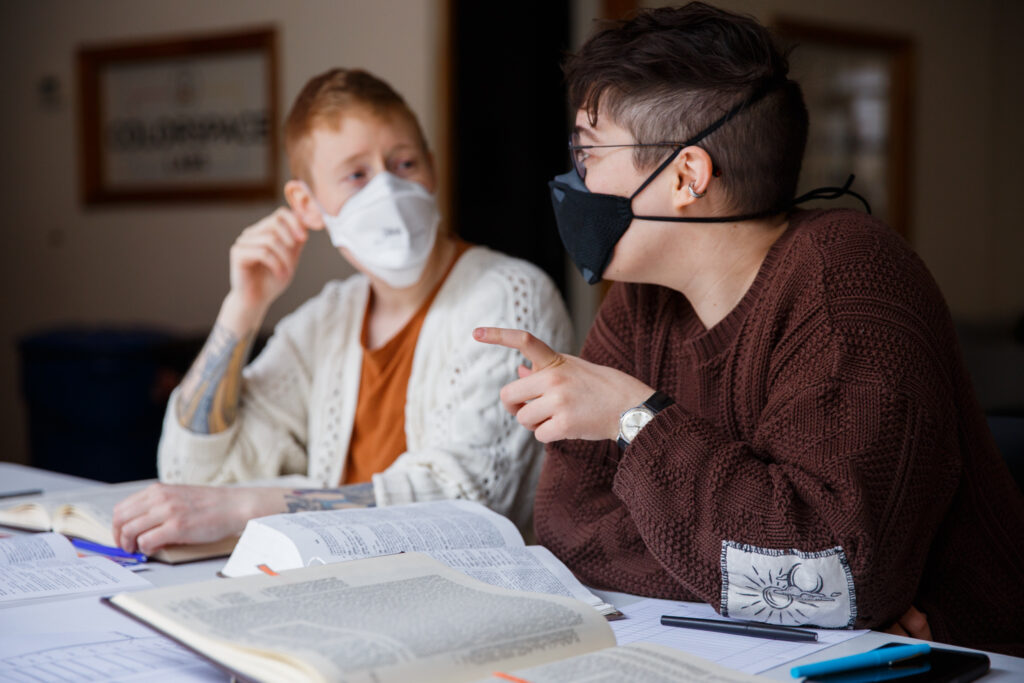Content warning: this piece mentions a Talmudic text that deals with the theme of sexual violence.
One morning during the early days of Mishnah Collective, I sat down to begin prepping the text for a session I was teaching. My process for preparing a text to learn with folks in Mishnah Collective is what y’all would expect from a SVARA teacher: I go word by word, find the root (or make my best guess), and look it up in the dictionary. That morning I set up my learning space, pulled out my Jastrow dictionary, and opened the page of my Mishnah to my assigned text, Mishnah Avot 1:5.
There is no such thing as an unproblematic text. (I’m not sure who authored this teaching, but I’ve heard it said by my chevruta and fellow SVARA Faculty Rabbi Mónica Gomery for years.) All the material in our tradition has been shaped by patriarchy and misogyny, just as every person and space in our world has been touched by patriarchy, white supremacy, ableism, Christian supremacy, and a myriad of other oppressions. That being said, sometimes there are really fucking problematic texts: the texts that say the quiet part out loud, the texts that make me question whether or not I can speak them, learn them, or consent to giving them a voice. Texts of this nature are different for each of us. Our boundaries and limits are shaped by our lives, our identities, and the ways we move through the world. They are equally shaped by the ways we cannot move through the world. Some of us may have an easy time brushing something off that, when read by our chevruta, is incredibly painful or disturbing. There are also the moments when our chevrutot and teachers may miss what we feel is an irreconcilable moment of harm.
Avot 1:5 is perhaps as explicit as it gets. As I prepared the text that morning, I tried to imagine what it would feel like to introduce this text to SVARA-niks in the Mishnah Collective, a space that feels so expansive and grounding for me as both a teacher and a learner. I thought of all of the questions I ask myself when I’m preparing to teach a text: What concepts do I need to explain to folks in order for us to understand what’s going on? Which words might we unpack together? What kinds of questions might be useful to bring out the powerful insights of folks in the room? As I asked these questions, I felt stuck. In the end, I couldn’t actually imagine teaching this text justly. So, I began teaching that day by sharing some of the strategies I use in my own learning when I encounter something that doesn’t sit right with me:
- Work it: I use this strategy when I feel able to grapple. I dig in whole-heartedly, compassionately, and fully to interpret and reinterpret and rework the text. To do this, I need a lot of time. For some texts, this process has taken me years! In other cases, it can take hours, weeks, or months. In any case, it takes time.
- Name it & move on: Using this strategy, I name the problematic pieces and learn the text anyway. Sometimes just naming the shitty thing can take the tension and the pain out of it, which allows me to feel less beholden to the text as “truth.” To do this, I need a lot of trust. I need to know that what I’m sharing is real, valued, and important to the folks around me, and that they’re committed to recognizing the things I’ve named.
To use either of these strategies, I have to be in a certain mindset. I have to be ready to dig in open-heartedly (with compassion for myself and sometimes even the tradition). That’s a process that requires consent in order to do it. I have to consent to that process; my open-heartedness and readiness can’t be chosen for me by another person.
When I am learning with others who don’t or can’t give consent, or when something—truly anything!—will get in the way of my ability to be open-hearted towards the text, I utilize a third option: (3) I skip it. When I’m learning something that hurts me, sometimes I have to skip it.
I believe that these strategies are gifts from the Rabbis, and each strategy can be used to respond to CRASH-es that come up in our learning. (Stay tuned for a future HOTS that roots each of these in the Talmud!) Each strategy, in its own unique way, honors the CRASH of an explicitly problematic text and honors our need for wholeness and truth as we navigate it. All three are valid and whichever one you are doing is the right one.
On that particular day in Mishnah Collective when we were slated to learn Avot 1:5, I quickly realized that I couldn’t consent on behalf of our beautiful and dynamic learning community to engage with this text. In that moment I made the decision to skip it. Years later, during our most recent Summer Zman, we did a different experiment: we invited folks to consent in and we learned a really freaking hard text together that explicitly brought to the surface themes of domination, coercion, and sexual violence. There were days when we just named it—we leaned into the trust we felt in each other and the space, we named the pain or harm, and we kept learning. There were days where we reworked it—we found new ways to read moments in the text, to reclaim them and repurpose them towards our own liberation. We also gave ourselves permission to skip it. Some of us skipped memorization of various parts of the sugya, realizing that there are some texts we don’t want to own.
In the podcast Witch Please, the hosts begin their second season by explaining what it means to engage with a text that has caused so much direct harm. (We can debate the merits of this as it applies to Harry Potter one day in Fairy Hours, y’all—bring it!) While listening, I was struck by the following statements:
“Why do we bother talking about the things that are hurtful within the things that we love? Why not pretend that they don’t exist and put our heads in the sand?
When something matters to you, it can be so comforting to say ‘I’m going to ignore the bad parts of this.’ But the thing about a feminist reading practice is that you can name those bad parts and, in the process, you no longer have to cut off the parts of yourself that are hurt by those things. It’s a kind of revelation, that you’re allowed to read things as your full self. In the short term it might feel like, “Oh god, paying attention to the racism and the misogyny and transphobia and ableism and fatphobia in something that I love is going to make all of this worse.” But my experience is that it feels better to get to be my whole self when I am reading things, and to critique them, to push back at them, and demand that things be better…
The more you identify the things that are hurtful, the more space you make to build real joy in the parts that you feel comfortable celebrating.”
I have had teachers who think this kind of critique lacks authenticity. I’ve had teachers engage with my questions about patriarchy, gender, and oppression in the text as an indication of my lack of investment, placing me “outside” of the canon. I eventually internalized the notion that to be a player meant hiding the parts of myself that felt angry or disappointed or disgusted with something the Rabbis said. I no longer think this is true. To learn as our full selves in the bet midrash necessitates naming that these texts are problematic. But this is not an act of distancing or removing ourselves from being in relationship with the Rabbis. Just like there is no unproblematic text, there is no unproblematic person or relationship. By staying present and contending with our tradition’s capacity to do harm, we can practice and develop our ability to authentically do the same in our relationships off the daf.







